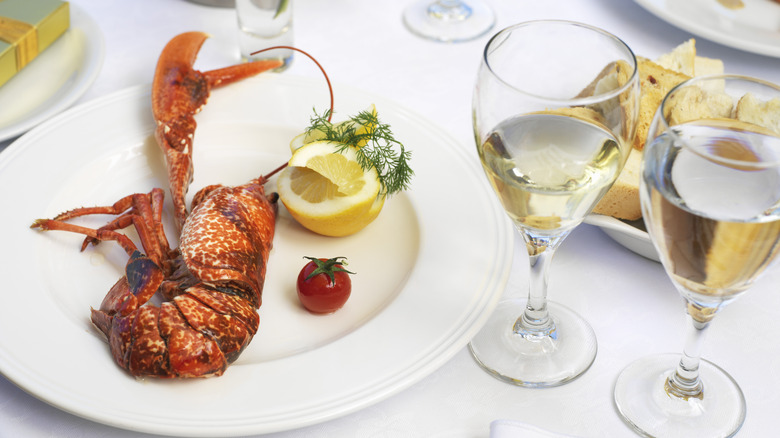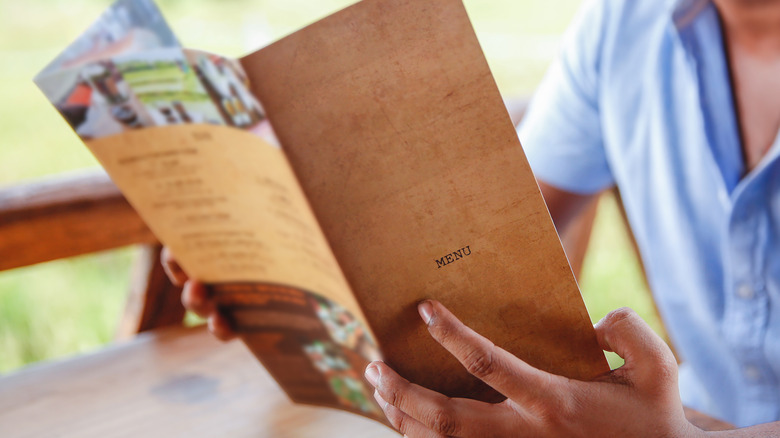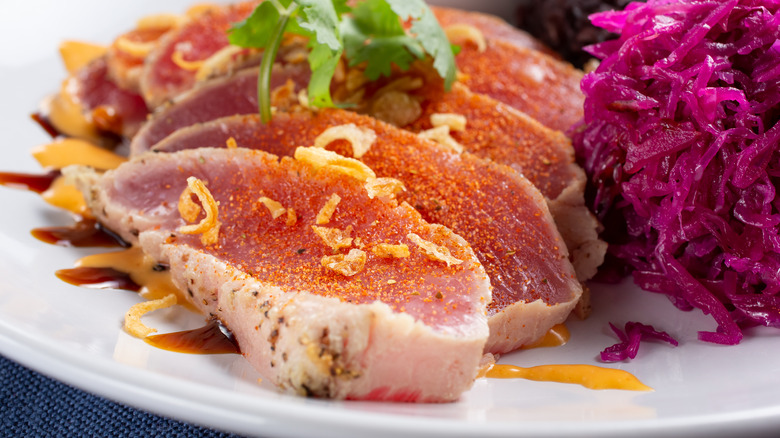The Seafood Ordering Mistake Professional Chefs Advise Against
There is a cardinal sin that professional chefs urge patrons not to commit when ordering seafood, and it's a lot easier to avoid than you may think: Don't order seafood at a non-seafood restaurant.
Just as you wouldn't (or shouldn't, anyway) order the filet mignon at a roadside diner, avoid ordering the lobster, oysters, or Chilean sea bass from an establishment that doesn't specialize in those dishes. "Do not order crab or crabcakes from restaurants not located on the coast or that are not known for seafood," advises Steve Chiappetti, executive chef of the Albert restaurant in Chicago (via Allrecipes).
Specialized seafood restaurants typically source their seafood more frequently and have a higher turnover, ensuring freshness. Indeed, as one chef explains on Reddit, every restaurant has a theme, and "a good rule of thumb is not to order stuff that is out of character with the rest of the menu." That's because most restaurants will feature just a few menu items that deviate from the theme for variety's sake and to provide diners with dietary restrictions with options. However, "That stuff will often be made with older ingredients and by people who aren't used to making it since it comes up so rarely in a night," the Reddit chef adds.
Other seafood sins to avoid
Regardless of the restaurant, there are some other seafood ordering sins you'll want to avoid to ensure an optimal dining experience and perhaps save yourself from a stomach bug. The first involves timing and is thought to have originated from Anthony Bourdain's 1999 memoir "Kitchen Confidential." Don't order fish on Sundays or Mondays, as most restaurants get their deliveries on Thursdays ahead of the weekend rush.
According to Silvia Barban, executive chef and co-owner of the Italian restaurant LaRina in Brooklyn, New York, and a former contestant on "Top Chef," you should also steer clear of seafood specials. "Specials are tricky in restaurants," she tells Business Insider. "It could be the most fresh and delicious special, but in some restaurants, specials are the way to clean up the fridge."
It's also a good idea to ask about sourcing if it's not clear from the menu description. James Briscione, chef and former director of culinary research at the Institute of Culinary Education in New York City, warns that seafood that has been imported, such as shrimp, tilapia, and catfish, is not always raised under the best conditions.
Buyer beware
There are also certain types of seafood you probably want to avoid entirely at both upscale restaurants and your local pub. According to CNN, conservation group Oceana conducted DNA tests on more than 400 samples from 277 locations across 24 states and found that 21% of fish was mislabeled on menus. The biggest offenders include snapper (mislabeled 42% of the time) and sea bass (mislabeled 55% of the time), which were swapped out for cheaper alternatives like perch or tilapia.
Yellowfin or ahi tuna is another dish you might want to think twice about before ordering, as it can accumulate high levels of mercury and other contaminants, especially in certain regions. According to the Environmental Protection Agency, Overconsumption of mercury can pose health risks, particularly for pregnant women and young children. Choosing sustainably sourced seafood and being mindful of the restaurant's sourcing practices can help mitigate these concerns for diners.


